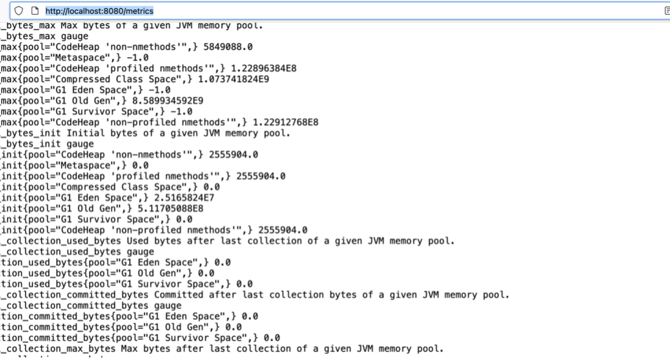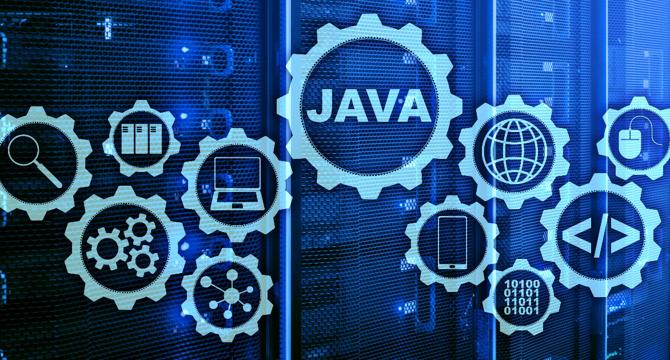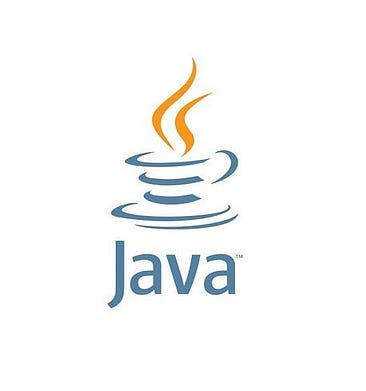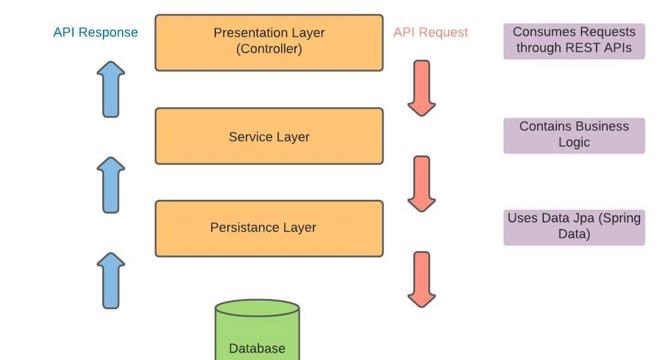Java
Self-Learning-Java
220

Image Credit: Self-Learning-Java
Getting Started with Prometheus in Java: A Hello World Example Using client_java
- To start working with Prometheus in Java, a Hello World example using client_java library is provided.
- First step includes creating a new maven project 'prometheus-demos' and updating pom.xml with necessary Prometheus dependencies.
- Second step involves creating a package 'com.sample.app' and defining the PrometheusHelloWorld application.
- Once the application is running, metrics can be viewed by accessing the URL http://localhost:8080/metrics and configuration should be added to the prometheus.yml file.
Read Full Article
13 Likes
Dev
427

Image Credit: Dev
How to Filter a Collection Using Streams in Java?
- Java 8 introduced the Stream API for functional-style operations on collections.
- Java streams are a sequence of elements supporting parallel and functional-style operations.
- To filter a collection using streams, create a stream with the stream() method from List, Set, or Map.
- Use the filter() method with a predicate to specify conditions for filtering elements.
- Filter a list of Person objects by age using streams and collect the filtered results.
- Chaining multiple filter() operations or combining conditions within a single filter() is possible.
- For complex conditions, define a separate method or use Predicate objects.
- Benefits include declarative code, lazy evaluation, and parallelization with streams.
- Best practices involve using meaningful variable names and profiling code.
- Common use cases for streams include data processing pipelines and validation.
Read Full Article
25 Likes
Infoq
181

Image Credit: Infoq
Java News Roundup: JDK 25 in Rampdown, JDK 26 Expert Group, Hibernate Search, Project Crema
- This Java news roundup covers various updates in the Java ecosystem, including JDK 25 in Rampdown Phase One and the formation of the JDK 26 Expert Group.
- JEP 509, JFR CPU-Time Profiling, is targeted for JDK 25 to enhance CPU-time profiling in the JDK Flight Recorder on Linux OS.
- JDK 25 has entered Rampdown Phase One with a finalized set of 18 features for the GA release in September 2025, making it the next LTS release after JDK 21.
- JSR 401 for JDK 26 has been approved, forming an expert group with members from Azul Systems, Oracle, Eclipse Foundation, and SAP SE.
- Eclipse JNoSQL 1.1.8 release introduces support for Graph NoSQL databases and a new JNoSQL extension for Quarkus extensions.
- Hibernate Search 8.0.0.Final release brings bug fixes, ORM 7.0.0 compatibility, improved integration with Hibernate Models, and metrics aggregation support.
- Helidon 4.2.3 release includes enhancements like X-Content-Type-Options header addition and resolution for missing query parameters.
- Open Liberty 25.0.0.6-beta release features Microprofile Health 4.0, file-based health check, and new attributes for better compatibility.
- Grails 7.0.0 milestone release focuses on bug fixes, artifact name repackaging, and source code refactoring into the grails-core repository.
- JBang 0.126.0 release offers bug fixes, documentation improvements, and LazyResourceRef for lazy loading of resources from remote locations.
- Project Crema, a new Oracle Labs project, aims to enhance Native Image's closed-world assumption by enabling dynamic loading of classes at runtime.
Read Full Article
10 Likes
Medium
169

Mastering Garbage Collection in Java
- Garbage Collection (GC) in Java is an automatic process that removes unused objects in the Heap memory space, eliminating the need for manual memory management.
- In Java, objects are considered garbage when no part of the program can reach them, and GC works in three main phases: Mark Phase, Sweep Phase, and Compact Phase.
- Memory in Java is divided into Generations like Young Gen and Old Gen, where objects initially go to Young Gen and then to Old Gen after surviving several GC cycles.
- Various GC strategies like Serial, Parallel, CMS, G1, and ZGC offer different benefits such as low pause times, better throughput and low latency balance, and ultra-low latency, catering to different use cases and applications.
Read Full Article
10 Likes
Discover more
Dev
243

Image Credit: Dev
My Java Journey ☕
- Jostin, a Software Developer and Systems Engineering student, shares his Java development journey through this blog.
- Java is widely used in enterprise environments and learning it can be beneficial for securing jobs at big companies.
- Starting with a course like 'Introduction to Programming and Computer Science' by freeCodeCamp.org is recommended for beginners in Java.
- Following the Java Developer Roadmap and exploring its concepts will be covered in Jostin's upcoming posts.
Read Full Article
14 Likes
Medium
73

Image Credit: Medium
From Overseas Grad to Batik Business Manager in Central Java’s Capital: Bridging Innovation and…
- Transitioning from an advisory role to a managerial position at Putri Batik Indonesia in Semarang, the manager aimed to apply contemporary management principles in a traditional craft industry.
- Initially focusing on observation and understanding of the business's traditions and dynamics, the manager learned that change required collaboration and consensus.
- Leading a digital transformation, the manager revamped PBI's marketing approach by emphasizing brand identity, product narratives, and emotional connections on social media platforms like Instagram and TikTok.
- The digitalization efforts resulted in increased online exposure and organic sales growth, despite initial challenges in shifting the team's mindset towards digital content creation.
- Balancing diverse stakeholder interests, including production quality, sustainable growth, and market demands, required the manager to navigate various operational complexities and responsibilities.
- Lessons learned encompassed the importance of effective human resource management, transformative cultural heritage practices, and learning-based leadership for sustainable business growth.
- The manager believes that creative businesses like Putri Batik Indonesia have significant growth potential and can serve as inspiring models in Indonesia's creative industry sector.
- Encouraging young professionals to explore unconventional career paths, the manager emphasizes the value of dynamic learning experiences in shaping one's career journey.
- Ultimately, the article highlights the importance of embracing change, fostering teamwork, and adapting cultural heritage to propel traditional industries towards sustainable growth and innovation.
Read Full Article
4 Likes
Medium
130

Image Credit: Medium
Mastering Java Streams: Functional Data Processing Made Easy
- Java Streams in Java allow for efficient data processing using sequential and parallel operations.
- Streams act as pipelines for transforming and filtering elements in Java.
- Key characteristics of Java Streams include filtering, mapping, grouping, aggregation, reducing, sorting, and pagination.
- Java Streams provide a concise, readable, and functional way to manipulate data, enhancing the development of clean and efficient Java code.
Read Full Article
7 Likes
Dev
200

Image Credit: Dev
Starting My Java Learning Journey 🚀
- A developer has started documenting their journey of learning Java on Dev.to to help others and track progress.
- Java was chosen due to its strong typing, object-oriented programming support, widespread use in enterprise applications, and foundation in Android development.
- The developer has covered basics like variables, data types, functions, loops, and tools being used such as Java 11, VS Code, and Terminal.
- Future plans include diving into object-oriented concepts, file handling, exception handling, collections, and potentially building a small console application.
Read Full Article
12 Likes
Medium
134

Image Credit: Medium
How to Create a Thread Pool in Java — The Right Way for Real-World Applications
- A thread pool is a group of pre-instantiated, reusable threads used to execute multiple tasks in Java.
- Java provides thread pool implementations through the ExecutorService interface in the java.util.concurrent package.
- For real-world applications, it is recommended to use ThreadPoolExecutor with a clear policy instead of Executors.newCachedThreadPool() or Executors.newFixedThreadPool().
- Thread pools in Java help in managing system resources efficiently, improving performance, and avoiding concurrency issues.
Read Full Article
8 Likes
Medium
425

Image Credit: Medium
They Know Java, But Not Joy
- A story highlighting the struggles of a person who is proficient in Java concepts and coding skills but lacks emotional understanding and inner peace.
- Emphasizes on the importance of mental well-being and self-reflection in addition to technical skills and certifications.
- Encourages individuals to prioritize happiness and self-care alongside professional achievements.
- The message conveys the significance of being human first, valuing inner joy, self-love, and peace in the journey of personal and professional growth.
Read Full Article
25 Likes
Medium
95

Image Credit: Medium
Final Part | Mastering Java OOP from Scratch | Abstraction | Interfaces
- Abstraction in Java OOP focuses on what a method does rather than how it is achieved.
- Abstraction can be implemented using interfaces or abstract classes to create templates that define the functionality of methods without implementing the logic.
- Abstract classes allow partial abstraction by sharing common code, while interfaces provide full abstraction with no method implementations allowed.
- Understanding abstraction, along with other OOP concepts like inheritance and polymorphism, is essential for writing clean, flexible, and scalable code in Java.
Read Full Article
5 Likes
Javacodegeeks
378

Image Credit: Javacodegeeks
Will Kotlin Multiplatform Replace Java on Android by 2030?
- Kotlin Multiplatform (KMP) aims to unify codebases across platforms, offering code reuse, faster development cycles, and modern language benefits like null safety and coroutines.
- Despite Kotlin's official endorsement for Android and KMP's promise, Java's strong presence in Android with its legacy, ecosystem, and robust tooling keeps it relevant.
- KMP brings features like shared business logic, coroutines, null safety, and near-native performance, but faces challenges like tooling maturity, learning curve, library availability, and ecosystem size.
- Experts suggest a coexistence of KMP and Java on Android, with KMP handling shared logic and native languages used for UI and platform-specific features by 2030.
- Realistically, KMP will not replace Java entirely but will complement it, enabling shared codebases and faster multi-platform development.
- Developers are advised to experiment with KMP for shared logic while leveraging Java and Kotlin JVM for platform-specific needs in the evolving Android development landscape.
- The future may see a gradual transition towards KMP for new projects targeting multiple platforms while legacy Java codebases persist for years.
- KMP adoption hurdles include tooling maturity, learning curve, library compatibility, performance nuances, and the size of its ecosystem and community support.
- By 2030, Android development is expected to utilize Kotlin JVM for UI and KMP for shared logic, fostering a hybrid approach rather than exclusive language replacement.
- While KMP offers exciting multiplatform app development opportunities, Java's maturity, ecosystem, and legacy presence ensure its significance alongside KMP in the upcoming decade.
Read Full Article
22 Likes
Medium
195

Why Learning Java Made Me a Better Frontend Developer (And How It Can Help You Too)
- Learning Java helped a frontend developer optimize payload size by proposing a solution that reduced payloads by 70%.
- Understanding Java allowed the developer to communicate effectively with the backend team using Jackson annotations as a secret weapon.
- Java literacy enabled the developer to trace frontend errors back to the backend, highlighting the importance of understanding both sides.
- Learning Java as a frontend developer can enhance your career by enabling you to speak the language used in the majority of enterprise backends, even if you still prefer JavaScript.
Read Full Article
11 Likes
Javarevisited
305

Image Credit: Javarevisited
Student Management System Project - FullStack Java + Spring Boot + React.js Example Tutorial
- Learn to create a School Classroom Application using Spring Boot, React.js, and H2 Database.
- The project involves functionalities like creating, deleting, updating, and retrieving student data.
- Frontend is built using React.js, backend using Spring Boot, and communication is through REST APIs.
- This tutorial guides on full-stack Java development for those who wish to become full-stack Java developers.
Read Full Article
18 Likes
Infoq
17

Image Credit: Infoq
Article: Bringing GPU-Level Performance to Enterprise Java: A Practical Guide to CUDA Integration
- Integrating CUDA with Java can bring significant performance gains ranging from ten to one hundred times for certain workloads, despite Java not being designed for CUDA.
- JNI acts as a bridge between Java and native CUDA code, allowing for offloading compute-intensive tasks like encryption, analytics, and inference to GPUs.
- Choosing between concurrency, multithreading, and true parallelism is crucial, with CUDA enabling scaling beyond Java's thread-based limits.
- Deployment of GPU acceleration in enterprise systems is now feasible using containerized workflows and memory-safe JNI patterns.
- GPU computing extends beyond AI, benefiting backend tasks like secure data processing through parallel execution at scale.
- Java's managed runtime faces challenges in meeting low-latency and high-throughput demands for HPC or data-intensive operations, making GPU acceleration with technologies like CUDA attractive.
- CUDA, primarily used with C/C++, allows developers to tap into GPUs for improved speedup times in computationally intensive tasks.
- Different execution models like multithreading, concurrency, parallelism, and multiprocessing in Java necessitate a clear understanding for effective integration with CUDA.
- CUDA provides a significant advantage in fine-grained, data-level parallelism that is challenging to achieve with standard Java multithreading.
- Tools like JCuda, JNI, and JNA offer options to integrate GPU acceleration into Java, each with its trade-offs in terms of performance and complexity.
Read Full Article
1 Like
For uninterrupted reading, download the app